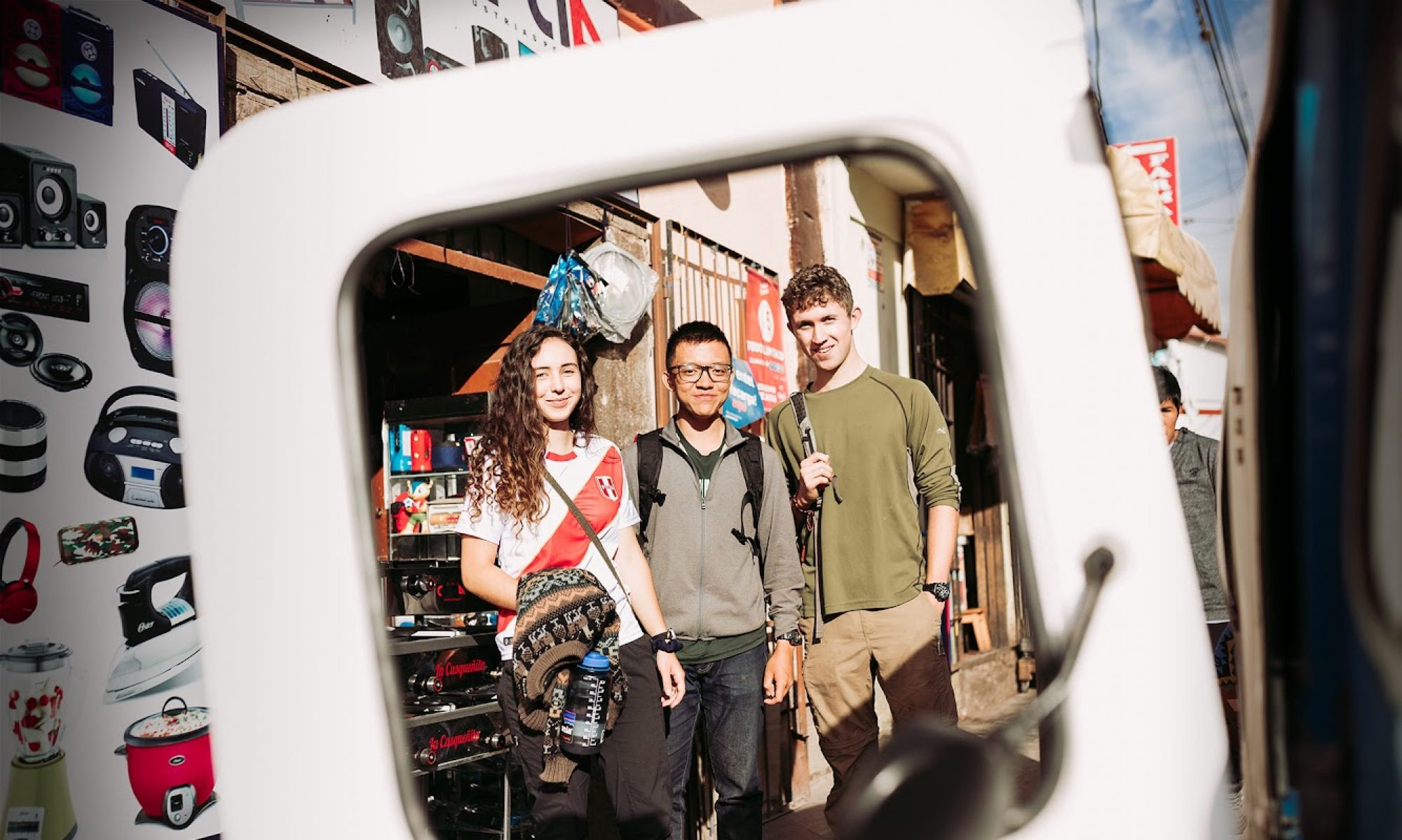by Zhiyi, Civic Semester Participant


It was such a new experience for us to play a game as the beginning of a day’s org visit.
We confusedly paired with kids and ran left and right without knowing much about the instructions. But we quickly learnt and started to have our own fun from getting to know more and more Quechua words. Hearing ‘Apu’ (which means mountain), my teammate Paroma, a seven-year-old smiley girl, hold her arms high up in the sky to form a triangle. I copied her movements carefully. When the teacher yelled ‘Pacha Mama’ (which means mother earth), all the kids quickly lay face down on the ground, opening their arms to hug the mother earth. Me and Paroma kept standing up and lying down, running here to there, acting like tigers or horse-riding… until we became the last few groups that were not knocked out. I hugged my little girl to celebrate our win and watched her walking into the classroom.
It was a normal Monday morning in Kuska School, a rural elementary school and kindergarten located right next to the Inca rail to Machu Pichu in the village of Ollantaytambo. It is hard to tell Kuska is a school from its appearance. The three separate classrooms and an activity room took much less space than combination of the playground with a swing and a slide and a farming field with nest for Guinea pigs and two lambs.
This is because Kuska emphasizes the methodology of experiential learning for boosting the connections of the students and the environment. This is so different from the school experience we had and the teachers there had. Every one of them are so passionate and so carefully take care of the students. During introduction from the charging teacher, we learned that as a private school that costs 50 dollars per month. But Kuska provides scholarship for over 70% students as long as their family complete the application. In addition to this, as a non-profit organization, they also started to impact the broader community by offering students and teachers in Ollantaytambo a library with advanced facilities in order to assist them to better interact with the bigger world.
I actually met Paroma more frequently than I thought. The teacher led the group of twenty students out to the playground for games or exercises every hour. Most of the students smiled to us when seeing us helped paint the tire and varnish the wall, looking at us curiously and answering our greetings. Children there learn Spanish, Quechua, and English. Some of them ran into us for the translations of a few words that confused them.
What surprised us was how curious the kids were about us! The teachers organized an out-of-schedule Q&A at the end of the day. Students around seven and eight actively raised their hands for questions. We sat in a circle with the curiosity on both sides. I sat next to Paroma, answering her questions of where I am from and my interests, and asked her questions.
Working as volunteers, we helped the teachers to prepare for the school celebration party on the weekend. At the end of the day, we were also invited to attend. On Saturday morning, six of us took the collectivo to ollantaytambo from Urubamba in a twenty minute’s ride. Walking on the special stone road there, we stepped in to the decorated audience area with the song from the children. I waved to Paroma, whose face is covered with pastel vine pattern like other students. I’m excited for the further interaction with them and the individual placement opportunity in Kuska School.
